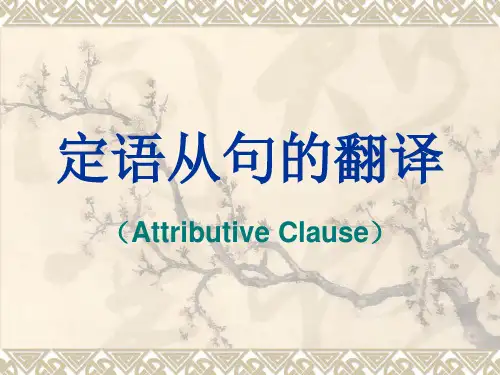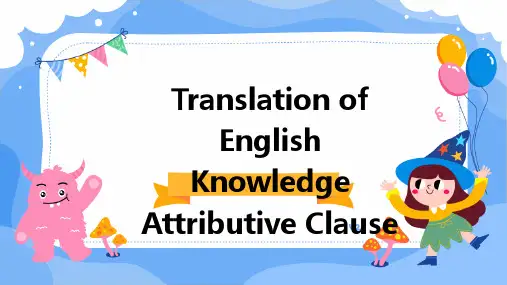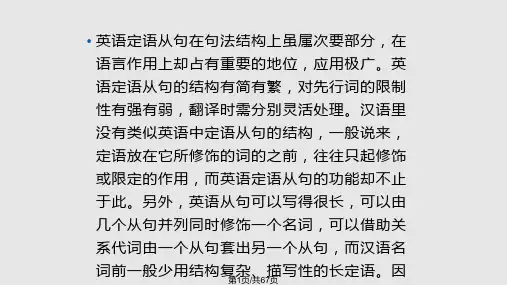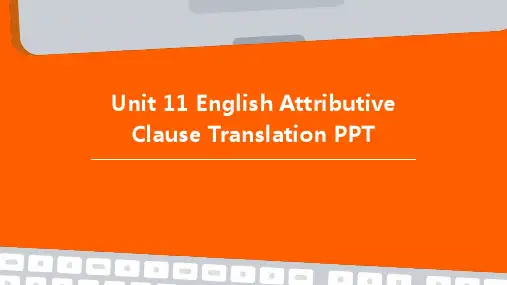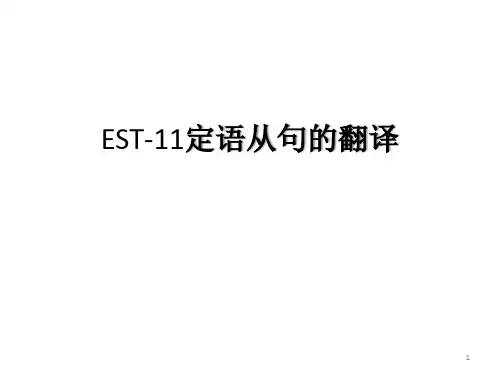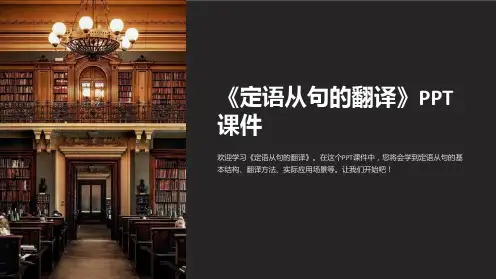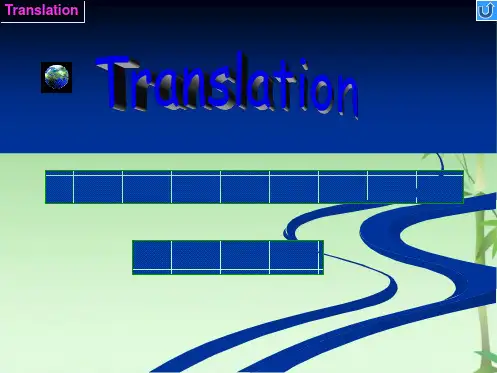后置法的应用可以将原文从句的关系代词按 顺序重复出来,也可以省略,或者将从句处理为 独立的句子。
He saw in front that white-haired old woman, whose eyes flashed red with anger. 他看见前面那个憔悴的白发老太太, 眼睛里愤怒地闪着红光。(省略)
He insisted on buying another house, which he had no use for. 他坚持要再买一幢房子,尽管他并无此需要。(强调 让步)
That man became desired for work, any work, which would help him to keep his family alive.
They went to Mr. Chang, who gave them a hearty welcome. 他们去看张先生,张先生热诚地欢迎他们。 I had a problem, which became clearly obvious just as I was to appear at the meeting. 我遇到了一个问题。当我就要
The emphasis was helped by the speaker’s mouth, which was wide, thin and hard-set. 说话人那又宽又薄又紧绷绷的嘴巴,帮助他加强了语 气。 The sun, which had hidden all day, now came out in all its splendor. 整天躲在云层里的太阳,现在又光芒四射地露面了。
融合法是把原句中的主语和定语从句融合在 一起,译成一个独立的句子。比如英语中“there are / is …”的句型处理,或者将定语从句转化而 成的谓语,与将英语主句压缩成汉语词组而形成 的主语结合起来,构成一个独立的汉语句子。
